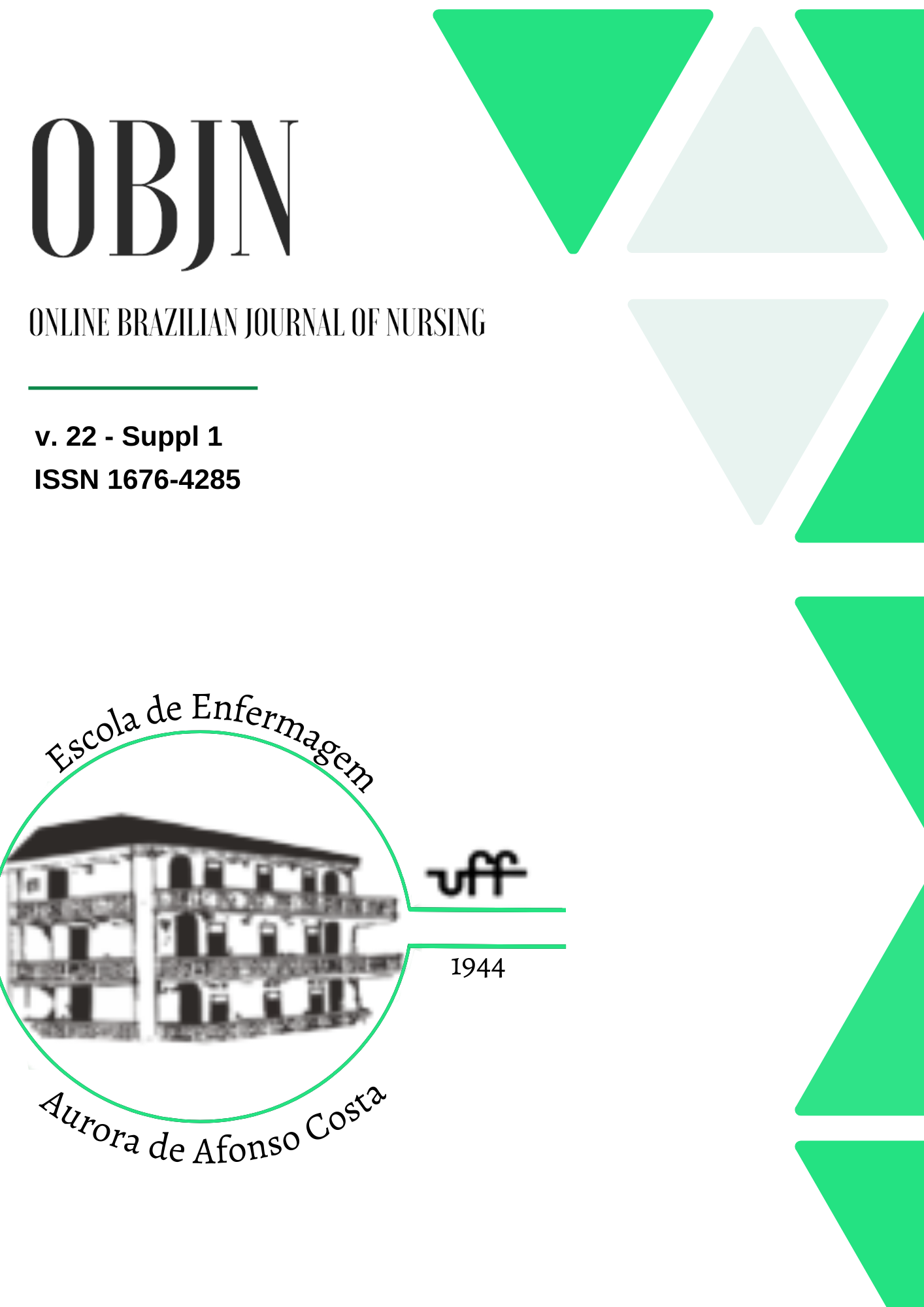Abstract
Objective: To evaluate the effectiveness of health interventions for condom use among homeless adolescents. Method: A systematic review of randomized and non-randomized clinical trials, before-and-after controlled studies, cohort, and case-control studies will be conducted on interventions that contribute to the use of condoms by homeless adolescents without language restrictions. The searches will be carried out in databases and follow the Cochrane Guidelines and the PRISMA checklist. Results: We expect to identify studies that point to interventions related to the use of condoms and the reduction of STI/HIV/AIDS among homeless adolescents, aiming to contribute to the promotion of health and Brazilian public policies. Conclusion: This study is in progress, and the protocol is registered at PROSPERO under the code CRD42021266572.
References
Nguyen DTK, McLaren L, Oelke ND, McIntyre L. Developing a framework to inform scale-up success for population health interventions: a critical interpretive synthesis of the literature. Glob Health Res Policy. 2020;5(1):18. https://doi.org/10.1186/s41256-020-00141-8
Nguyen G, Costenbader E, Plourde KF, Kerner B, Igras S. Scaling-up normative change interventions for adolescent and youth reproductive health: an examination of the evidence. J Adolesc Health. 2019;64(4):S16–30. https://doi.org/10.1016/j.jadohealth.2019.01.004
Carvalho KM, Silva CRDT, Figueiredo MLF, Nogueira LT, Andrade EMLR. Educational interventions for the health promotion of the elderly: integrative review. Acta Paul Enferm. 2018;31(4):446–54. https://doi.org/10.1590/1982-0194201800062
Organização Pan-Americana da Saúde (OPAS); Ministério da Saúde (BR). Saúde e sexualidade de adolescentes. Construindo equidade no SUS [Internet]. Brasília (DF): OPAS, MS; 2017 [cited 2022 Feb 27]. Available from: https://bvsms.saude.gov.br/bvs/publicacoes/saude_sexualidade_adolescente_construindo_equidade_sus.pdf
O’Carroll A, Wainwright D. Making sense of street chaos: an ethnographic exploration of homeless people’s health service utilization. Int J Equity Health. 2019;18(1):113. https://doi.org/10.1186/s12939-019-1002-6
Malta DC, Reis AAC, Jaime PC, Morais Neto OL, Silva MMA, Akerman M. Brazil’s Unified Health System and the National Health Promotion Policy: prospects, results, progress and challenges in times of crisis. Ciênc Saúde Coletiva. 2018;23(6):1799–809. https://doi.org/10.1590/1413-81232018236.04782018
Gutierrez EB, Pinto VM, Basso CR, Spiassi AL, Lopes MEBR, Barros CRS. Factors associated with condom use inyoung people-A population-based survey. Rev Bras Epidemiol. 2019;22:e190034. https://doi.org/10.1590/1980-549720190034
Borges ALV, Duarte LS, Cabral CS, Lay AAR, Viana OA, Fujimori E. Male condom and dual protection use by adolescent men in Brazil. Rev Saúde Pública. 2021;55:109. https://doi.org/10.11606/s1518-8787.2021055003298
Felisbino-Mendes MS, Paula TF, Machado ÍE, Oliveira-Campos M, Malta DC. Analysis of sexual and reproductive health indicators of Brazilian adolescents, 2009, 2012 and 2015. Rev Bras Epidemiol. 2018;21(suppl 1):e180013. https://doi.org/10.1590/1980-549720180013.supl.1
Vieira KJ, Barbosa NG, Dionízio LA, Santarato N, Monteiro JCS, Gomes-Sponholz FA. Initiation of sexual activity and protected sex in adolescents. Esc Anna Nery. 2021;25(3):e20200066. https://doi.org/10.1590/2177-9465-EAN-2020-0066
Carvalho GRO, Pinto RGS, Almeida LM, Santos MS. Atitudes de adolescentes de escolas públicas acerca do uso do preservativo: um estudo descritivo. Rev Baiana Saúde Pública. 2021;43(3):487–501. https://doi.org/10.22278/2318-2660.2019.v43.n3.a2765
Aragão JMN, Amaral HRM, Sousa FWM, Oliveira EN, Vasconcelos MIO. Knowledge, attitude and practice of school teenagers in relation to the use of male condoms. Rev Enf Contemp. 2021;10(1):67–78. https://doi.org/10.17267/2317-3378rec.v10i1.3446
Noll M, Noll PRES, Gomes JM, Soares Júnior JM, Silveira EA, Sorpreso ICE. Associated factors and sex differences in condom non-use among adolescents: Brazilian National School Health Survey (Pense). Reprod Health. 2020;17(1):139. https://doi.org/10.1186/s12978-020-00987-8
Nascimento EGC, Cavalcanti MAF, Alchieri JC. Adesão ao uso da camisinha: a realidade comportamental no interior do nordeste do brasil. Rev Salud Pública. 2017;19(1):39–44. https://doi.org/10.15446/rsap.v19n1.44544
Ministério da Saúde (BR). Portaria nº 2.436, de 21 de setembro de 2017. Aprova a Política Nacional de Atenção Básica, estabelecendo a revisão de diretrizes para a organização da Atenção Básica, no âmbito do Sistema Único de Saúde (SUS) [Internet]. Brasília (DF): Ministério da Saúde; 2017 [cited 2022 Jan 18]. Available from: https://bvsms.saude.gov.br/bvs/saudelegis/gm/2017/prt2436_22_09_2017.html
Lopez Bernal J, Cummins S, Gasparrini A. Interrupted time series regression for the evaluation of public health interventions: a tutorial. Int J Epidemiol. 2017;dyw098. https://doi.org/10.1093/ije/dyw098
World Health Organization (WHO). Young People´s Health – a Challenge for Society. Report of a WHO Study Group on Young People and Health for All. Technical Report Series 731 [Internet]. Geneva: WHO; 1986 [cited 2022 Jan 18]. Available from: https://apps.who.int/iris/handle/10665/41720
GRADE Working Group [Internet]. [place unknown]: GRADE Working Group; 2022 [cited 2022 Jan 18]. Available from: https://www.gradeworkinggroup.org/
Higgins JPT, Thomas J, Chandler J, Cumpston M, Li T, Page MJ, et al, editors. Cochrane Handbook for Systematic Reviews of Interventions version 6.3 (updated February 2022) [Internet]. [place unknown]: Cochrane; 2022 [cited 2022 Jan 18]. Available from: https://www.training.cochrane.org/handbook
Wells G, Shea B, O’Connell J, Robertson J, Peterson V, Welch V, et al. The Newcastle-Ottawa scale (NOS) for assessing the quality of nonrandomized studies in meta-analysis [Internet]. Ottawa: Ottawa Hospital Research Institute; 2022 [cited 2022 Jan 18]. Available from: https://www.ohri.ca//programs/clinical_epidemiology/nosgen.pdf

This work is licensed under a Creative Commons Attribution 4.0 International License.
Copyright (c) 2023 Array

